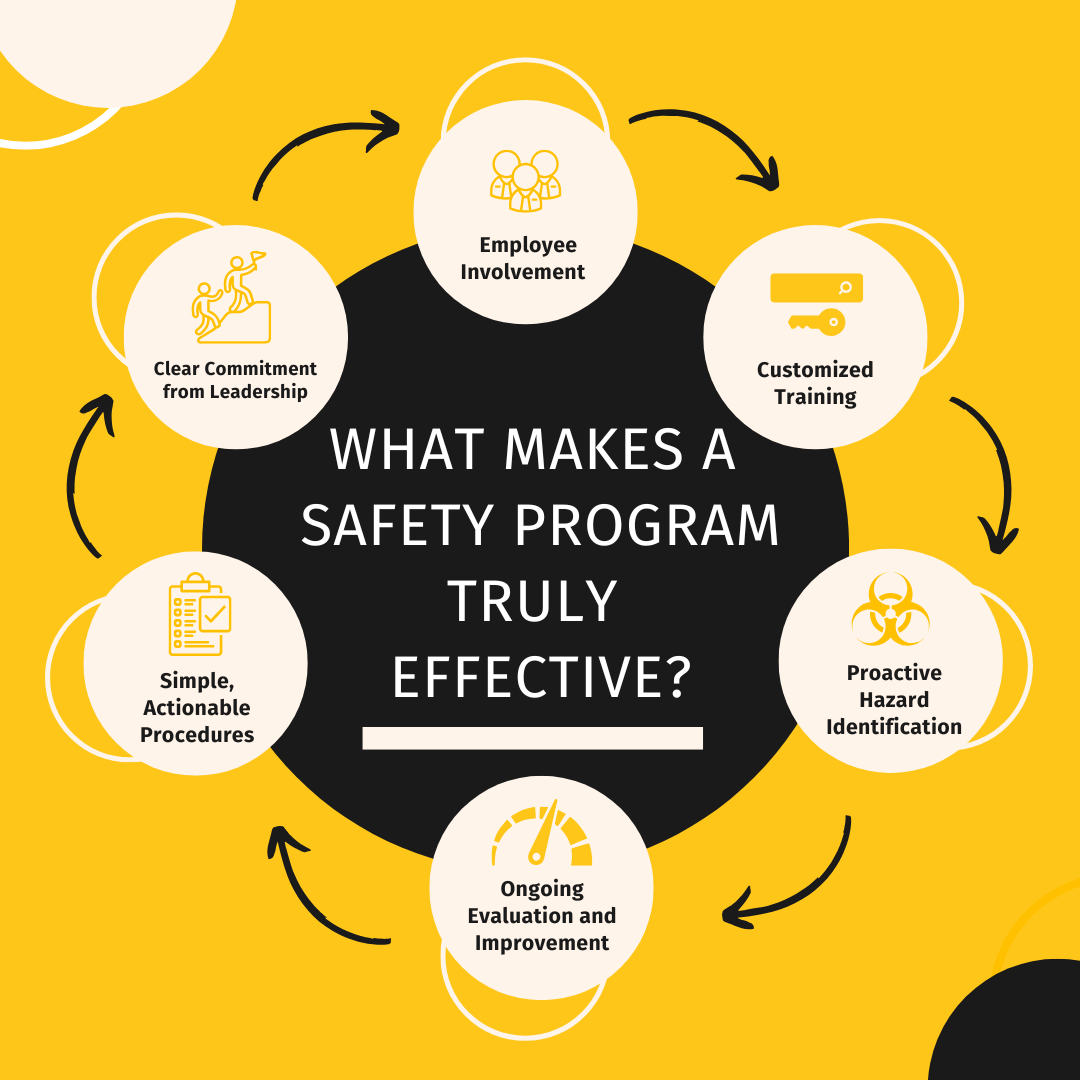What Makes a Safety Program Truly Effective?
In today’s fast-moving industries like manufacturing, construction, logistics, and healthcare, having a safety program is a must. But here’s the truth, not all safety programs actually work. Some just sit on a shelf, while others actively protect people, reduce costs, and help build a strong, positive work culture.
So, what makes a safety program really effective? Let’s break it down.
1. It Starts with Leadership
A great safety program begins at the top. When leaders show they care about safety through their actions not just their words, people take notice.
This means:
Making room in the budget for safety improvements
Being present in safety meetings
Publicly recognizing safe behavior
Holding everyone, including management, accountable
When leadership leads by example, employees follow.
2. Everyone Has a Voice
A strong safety program is something you build with your team, not for them. People on the front lines are often the ones who see risks first, so their input matters.
You can involve them by:
Encouraging them to speak up about hazards
Inviting them to join safety committees
Asking for feedback after incidents
Letting them lead quick safety talks
When employees feel heard, they’re more engaged and more invested in safety.
3. Training That Actually Sticks
One-size-fits-all safety training usually gets ignored. Real learning happens when the training feels relevant.
That means tailoring it to:
The specific tasks and risks employees face
Real-life situations they might deal with
Your team’s communication style and language
And training shouldn’t be a one-and-done thing. Keep it fresh with short refreshers, hands-on learning, and regular conversations.
4. Focus on Prevention, Not Just Reaction
A good safety program doesn’t wait for something to go wrong. It’s always looking ahead.
That includes:
Regular walkthroughs to spot hazards
Encouraging reports of near misses
Looking at trends to catch problems early
Getting feedback from employees on what feels unsafe
By being proactive, you reduce surprises and injuries.
5. Keep It Simple and Clear
If your safety rules are too long or confusing, they’ll get skipped. Keep things easy to follow and easy to access.
Try things like:
Short checklists
Simple step-by-step instructions
Visual reminders around the workplace
Mobile-friendly guides that people can pull up on the go
Clear information makes it easier for everyone to stay safe, every day.
6. Always Keep Improving
A safety program is not a “set it and forget it” kind of thing. It should grow with your business and the needs of your team.
That means checking in regularly to:
Track what’s working and what’s not
Review safety metrics
Learn from incidents and near misses
Stay updated on new tools, trends, and regulations
When you treat your safety program like a living system, it becomes a long-term asset.
An effective safety program isn’t about paperwork. It’s about people. When you put your team’s well-being at the center, involve them in the process, and keep things clear and practical, you create a workplace where safety becomes second nature.
At Nano Safety & Security, we help companies move beyond just compliance. We build safety programs that actually work and that people believe in.



